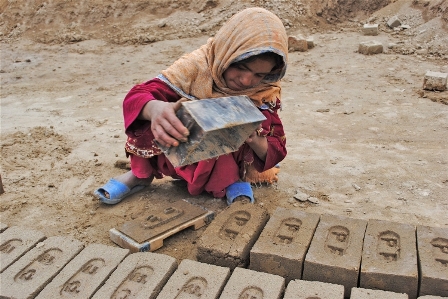
Children work 11-14 hours a day, six days a week, breathing in a lot of dust from the ovens. (Photo: Bethany Matta / IRIN)
More Photos
Bonded labour in Afghanistan’s brick kilns is one of the most common forms of hazardous labour in the country. More than half of the brick kiln workers surveyed in a recent report by the International Labour Organization (ILO) were children, with most under 14. Few are getting any education to allow them to develop skills needed to break out of work in the kilns.
Most children began working at the age of seven or eight, and almost 80 percent are under 10. According to the ILO, the kilns rely on debt bondage: Workers and their families are tied to a kiln by the need to pay off loans taken out for basic necessities, medical expenses, weddings and funerals.
The ILO report found that basic subsistence needs force families to repeatedly take out loans, often paying for a winter’s food with a loan which they pay back over an entire season. Of the families surveyed, 64 percent had worked in the kilns for 11 years or more, and 35 percent had done so for more than 20 years.
The exact number of kilns in Afghanistan is unknown, but reports suggest that in Nangarhar Province’s Surkhroad District alone there are about 90, with 150-200 children working in each one. ILO estimates that Kabul Province’s Deh Sabz District has 800 kilns.
“It is out of necessity and extreme poverty that households enlist their children from an early age to work in the kilns,” said Sarah Cramer, lead author of the ILO report. “There are four cycles prevalent in the situation of bonded labour in Afghanistan - the cycle of debt, cycle of vulnerability, cycle of dependence and the cycle of poverty.”



